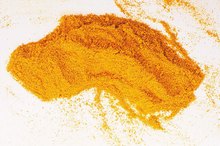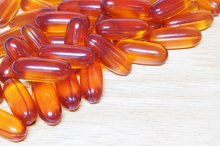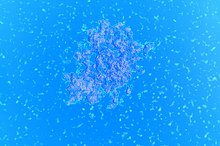What Are the Treatments for Candida Parapsilosis?
Candida parapsilosis is an yeast that belongs to the Candida family 1. It is commonly associated with blood, wound and tissue infections in individuals with reduced immunity, such as hospitalized patients and premature infants. In fact, according to a March 2002 study published in "Diagnostic Microbiology and Disease," while the number of infections caused by Candida albicans, the most common candida species, has remained fairly stable over the past 40 years, infections due to Candida parapsilosis has increased considerably 1. Most infections of Candida parapsilosis are severe and require prompt treatment in a hospital setting.
If you are experiencing serious medical symptoms, seek emergency treatment immediately.
Anti-fungals
When blood or other systemic infections are suspected by the physician, broad-spectrum antibiotics that are effective against a wide variety of microorganisms are prescribed initially. However, if the laboratory tests confirm that the infection is due to Candida parapsilosis, anti-fungals that are effective against it are prescribed. According to John Hopkins Point of Care Information Technology Center, amphoterecin B is the first choice and is usually administered intravenously for 2 to 5 days until the infection is under control. This is followed by oral administration of the drug for 2 to 4 weeks for complete eradication of the yeast. Many patients may experience side effects such as nausea, vomiting, joint pain and weight loss, especially with intravenous administration of amphoterecin B.
Azole family drugs such as fluconazole and voriconazole can be also be prescribed. However, Candida parapsilosis demonstrates significant drug resistance against them. Thus, azole drugs should be used only if the laboratory tests indicate that the strain of Candida parapsilosis is susceptible to them.
An article published in the 2006 edition of the "Scandinavian Journal of Infectious Diseases" reports a case of Candida parapsilosis arthritis that has been treated successfully with another anti-fugal known as caspofungin, which can be administered intravenously and acts by disrupting the candida cell wall 2. Caspofungin has fewer side effects compared to amphoterecin B, but these may include upset stomach and headache.
- When blood or other systemic infections are suspected by the physician, broad-spectrum antibiotics that are effective against a wide variety of microorganisms are prescribed initially.
- An article published in the 2006 edition of the "Scandinavian Journal of Infectious Diseases" reports a case of Candida parapsilosis arthritis that has been treated successfully with another anti-fugal known as caspofungin, which can be administered intravenously and acts by disrupting the candida cell wall 2.
Oxygen Therapy
Antibiotics for Balanitis
Learn More
Many patients with Candida parapsilosis blood infections may experience shortness of breath and disorientation. Oxygen therapy, which involves administration of oxygen in concentrations higher than that in the room environment using a simple face mask or a nasal cannula, can provide relief from the symptoms.
Intravenous Fluids
Intravenous fluids such as saline, which contains 0.9 percent sodium chloride, are given using an intravenous drip and an IV access device such as a needle or a peripheral cannula. IV fluid administration treats low blood pressure that may be associated with Candida parapsilosis blood infections.
Anti-pyretics
Antibiotics to Treat Cystitis
Learn More
Anti-pyretics are drugs that can bring down the fever that may occur in patients with Candida parapsilosis infection. Drugs such as acetaminophen, ibuprofen and aspirin can be given orally or intravenously, depending on the condition of the patient. Anti-pyretics can also help reduce the side effects of amphoterecin B. MayoClinic.com, however, warns against the use of aspirin in patients younger than 18 years of age due to the risk of developing a serious condition known as Reye's syndrome, which is characterized by swelling of the liver and brain 3.
- Anti-pyretics are drugs that can bring down the fever that may occur in patients with Candida parapsilosis infection.
- Anti-pyretics can also help reduce the side effects of amphoterecin B. MayoClinic.com, however, warns against the use of aspirin in patients younger than 18 years of age due to the risk of developing a serious condition known as Reye's syndrome, which is characterized by swelling of the liver and brain 3.
Related Articles
References
- "Diagnostic Microbiology and Infectious Disease"; Hematogenous infections due to Candida parapsilosis: changing trends in fungemic patients at a comprehensive cancer center during the last four decades; Amar Safda, David S. Perlin and Donald Armstrong; March 2002
- "Scandinavian Journal of Infectious Diseases"; Successful treatment of Candida parapsilosis (fluconazole-resistant) osteomyelitis with caspofungin in a HIV patient.; L. Legout et al; 2002
- MayoClinic.com: Reye's Syndrome
- InformedHealth.org [Internet]. Cologne, Germany: Institute for Quality and Efficiency in Health Care (IQWiG); 2006-. How can you prevent oral thrush?. 2012 Apr 26 [Updated 2019 Aug 15].
- Spampinato C, Leonardi D. Candida infections, causes, targets, and resistance mechanisms: traditional and alternative antifungal agents. Biomed Res Int. 2013;2013:204237. doi:10.1155/2013/204237
- InformedHealth.org [Internet]. Cologne, Germany: Institute for Quality and Efficiency in Health Care (IQWiG); 2006-. How can you prevent oral thrush?. 2012 Apr 26 [Updated 2019 Aug 15].
- Pankhurst CL. Candidiasis (oropharyngeal). BMJ Clin Evid. 2012;2012.
- Mora Carpio AL, Climaco A. Fungemia Candidiasis. [Updated 2019 Jun 3]. In: StatPearls. Treasure Island (FL): StatPearls Publishing; 2019 Jan-.
- Robertson KD, Mehta D. Esophageal Candidiasis. [Updated 2019 Dec 17]. In: StatPearls. Treasure Island (FL): StatPearls Publishing; 2019 Jan-.
- Jeanmonod R, Jeanmonod D. Vaginal Candidiasis (Vulvovaginal Candidiasis). [Updated 2019 Feb 24]. In: StatPearls. Treasure Island (FL): StatPearls Publishing; 2019 Jan-.
- Taudorf EH, Jemec GBE, Hay RJ, Saunte DML. Cutaneous candidiasis - an evidence-based review of topical and systemic treatments to inform clinical practice. J Eur Acad Dermatol Venereol. 2019;33(10):1863-1873. doi:10.1111/jdv.15782
- Santana IL, Gonçalves LM, De vasconcellos AA, Da silva WJ, Cury JA, Del bel cury AA. Dietary carbohydrates modulate Candida albicans biofilm development on the denture surface. PLoS ONE. 2013;8(5):e64645. doi:10.1371/journal.pone.0064645
- Gu Y, Zhou G, Qin X, Huang S, Wang B, Cao H. The Potential Role of Gut Mycobiome in Irritable Bowel Syndrome. Front Microbiol. 2019;10:1894. doi:10.3389/fmicb.2019.01894
- Santelmann H, Howard JM. Yeast metabolic products, yeast antigens and yeasts as possible triggers for irritable bowel syndrome. Eur J Gastroenterol Hepatol. 2005;17(1):21-6. doi:10.1097/00042737-200501000-00005
- Piliponsky AM, Romani L. The contribution of mast cells to bacterial and fungal infection immunity. Immunol Rev. 2018;282(1):188–197. doi:10.1111/imr.12623
- Sandini S, La valle R, Deaglio S, Malavasi F, Cassone A, De bernardis F. A highly immunogenic recombinant and truncated protein of the secreted aspartic proteases family (rSap2t) of Candida albicans as a mucosal anticandidal vaccine. FEMS Immunol Med Microbiol. 2011;62(2):215-24. doi:10.1111/j.1574-695X.2011.00802.x
- "Yeast Infections " Medline Plus
- "Candidiasis" Centers for Disease Control and Prevention
- Santelmann, H. & Howard, J. "Yeast metabolic products, yeast antigens and yeasts as possible triggers for irritable bowel syndrome" European Journal of Gastroenterology & Hepatology 2005 17:21-26.
Writer Bio
A freelance writer and blogger since 2007, Shamala Pulugurtha's work has appeared in magazines such as the "Guide to Health and Healing" and prominent websites like Brain Blogger and NAMI California. Pulugurtha has a postgraduate degree in medical microbiology from Manipal Academy of Higher Education, India and has completed course work in psychology and health education.








